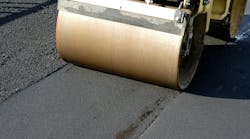Space-Saving Drainage
With growing concern over the depletion of our nation’s most precious resource, drinking water, and the ever-increasing regulatory control of storm water management, the challenge for designers is to meet shifting environmental needs while also meeting the needs of the owner and the community at large.
In the Chesapeake Bay area, storm water runoff is the most significant new source of pollution and is often linked to increasing amounts of impervious surfaces such as rooftops and parking lots. It was with this concern in mind that Prime Retail, one of the largest developers of outlet centers in the country, incorporated innovative storm water management systems, including pervious concrete, when designing its 115,000-sq-ft, $55-million expansion at Prime Outlets in Williamsburg, Va.
At a total gross leasable area of 456,922 sq ft, Prime Outlets is the region’s largest outlet shopping destination, offering 120 stores. Construction elements, including the largest pervious concrete paving project in the U.S., eco-conscious storm water management, rainwater recycling irrigation and reduced water consumption, allowed the project to comply with federal requirements for “green” building and facilitated its qualifying for certification in the U.S. Green Building Council’s Leadership in Energy and Environmental Design (LEED) Green Building Rating System.
The Material
Pervious concrete pavement is a unique cement-based product; its porous structure permits free passage of water through the pavement and into the soil without compromising the pavement’s durability or integrity. Pervious concrete is not new. Studies show that pervious concrete was first used in the mid-1800s, and in fact, has been used widely for more than 30 years in many applications in Europe and Japan, including as a roadway surface course to reduce traffic noise and improve skid resistance.
However, pervious concrete is enjoying a new popularity—to the point that it is the hottest topic in today’s sustainable development design community. Pervious concrete allows rainwater to pass through to the ground below while providing a flat, stable place on which to park the family car. This type of pavement has a void content of 15 percent to 30 percent, equating to a flow rate of 3 to 5 gal per minute per square foot, or 270 to 450 in./hour.
Pervious concrete has been recognized by the U.S. Environmental Protection Agency as a storm water pollution prevention best management practice device. When used as an infiltration alternative to the more traditional options (i.e., grassy swales and drain invert filtration systems), pervious concrete pavement can also reduce or eliminate the need for expensive sewer tie-ins and provide the inherent durability, safety and low life-cycle cost expected of concrete pavement.
From Pond to Parking
Storm water runoff was a major factor influencing the design of this expansion, and the team at Landmark Design Group, led by Stephen Romeo, recognized early on the potential to not only address specific hydrologic concerns but also to increase the amount of rentable space for the owners.
A unique storm water management system was devised that combined storm water infiltration with water harvesting. A portion of the filtered rainwater is collected through the use of underground storm water chambers and underdrain, and it is used for irrigation of the trees, shrubs and flowers that dot the parking lot landscape.
Additionally, underground storage was designed to maximize the use of land previously dedicated to an existing detention pond. The pond was fitted with Atlantis D-Raintank modules—a system that resembles hundreds of plastic crates lashed together with plastic zip-ties—that will store and then slowly release excess water over time. This storm management system is paved with pervious concrete and can be used as an auxiliary parking lot with spaces for up to 448 vehicles.
Through this design, the project team found a balance between two forces frequently at odds with one another: economic development and environmental protection. “Finding and investing in such a green compromise,” said Virginia Sen. Thomas K. Norment, “is not always a characteristic you see in the development community.” Speaking at the first annual Green Pavement Day, which was hosted at the Williamsburg site by the Virginia Ready Mixed Concrete Association (VRMCA), Norment joined other state and local officials in congratulating Prime Retail and Landmark Design Group for their progressive thinking.
Project Details
The project included approximately 7.5 acres of pervious concrete pavement. The general contractor was Henderson Inc., Williamsburg, and the pervious concrete was placed by Magruder Construction, Sanford, Fla., a certified pervious concrete contractor of the National Ready Mixed Concrete Association (NRMCA). Concrete was supplied by Titan Virginia Ready Mix.
The design team at Prime Outlets and Landmark Design Group relied heavily on the ready-mixed concrete industry for design support and to present its case to the James City County Planning Commission for approval. NRMCA worked closely with VRMCA’s director of industry services, Keith Beazley, to provide support and technical assistance, which aided in the commission’s ultimate acceptance of the pervious concrete technology.
Additionally, approximately 3.5 acres of conventional concrete pavement was utilized in the driving lanes. The combination of conventional and pervious concrete pavements allowed for a more uniform subgrade preparation in the main parking areas.
It also allowed all the area beneath the more than 11 acres of pavement to be used for storm water detention, eliminating the need for a dedicated area above ground for a traditional detention pond. This allowed the developer to add more than 40 percent more retail rental space. Furthermore, Prime Retail can expect up to 45 percent savings in total ownership costs over the 20-year design period by using low-maintenance concrete for the paving elements.
A member of the upper-level management of Prime Retail stated that using pervious concrete was a “no-brainer” choice, referring to the material's economic benefit and environmental friendliness.
Download: Here

